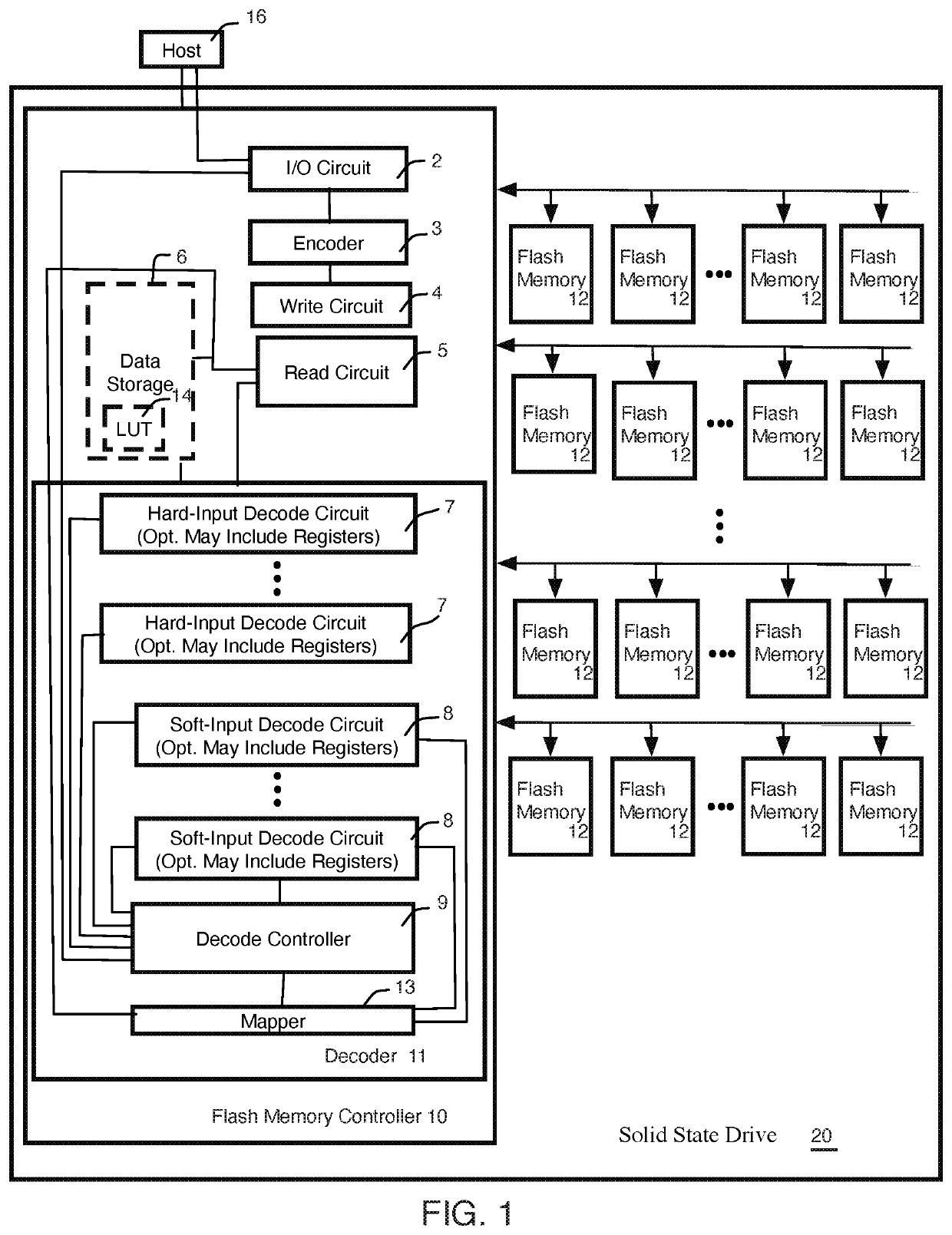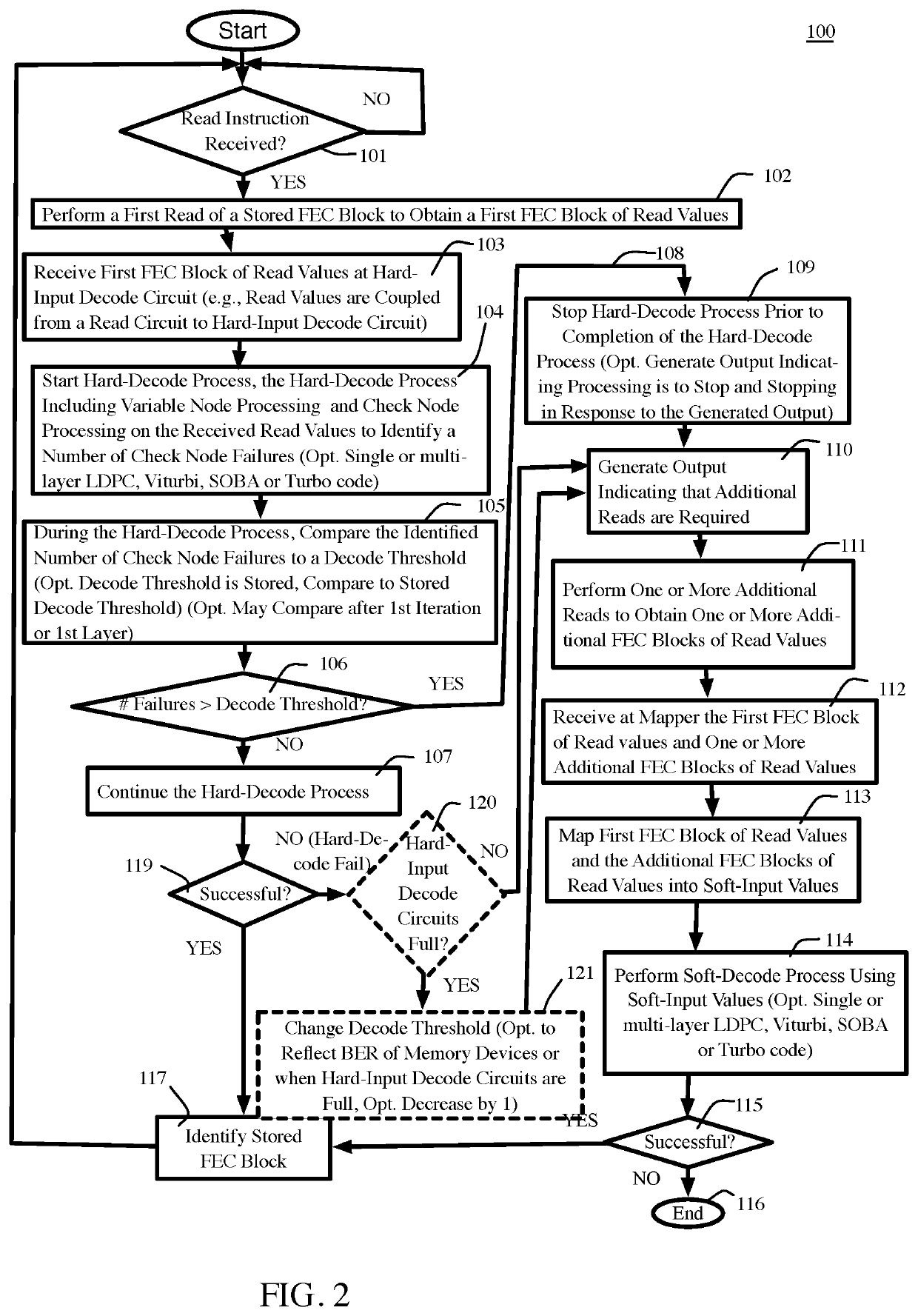Memory controller and method for decoding memory devices with early hard-decode exit
a memory controller and memory device technology, applied in the direction of coding, error correction/detection using turbo codes, instruments, etc., can solve the problems of gross failure, host error, decode process stop, etc., to reduce negative effects, increase rber, and increase the use of soft-input decoders
- Summary
- Abstract
- Description
- Claims
- Application Information
AI Technical Summary
Benefits of technology
Problems solved by technology
Method used
Image
Examples
Embodiment Construction
[0018]Persons of ordinary skill in the art will realize that the following description is illustrative only and not in any way limiting. Other examples will readily suggest themselves to such skilled persons.
[0019]FIG. 1 shows a Solid State Drive (SSD) 20 that includes a flash memory controller 10 and flash memory devices 12. Flash memory controller 10 includes an input and output (I / O) circuit 2 that is coupled to an encoder 3. Encoder 3 is coupled to write circuit 4. Decoder 11 is coupled to data storage 6 and read circuit 5, Decoder 11 includes hard-input decode circuits 7, soft-input decode circuits 8, decode controller 9 and mapper 13. Decode controller 9 is coupled to each of the hard-input decode circuits 7, to each of the soft-input decode circuits 8, to I / O circuit 2 and to mapper 13. Mapper 13 is further coupled to read circuit 5, data storage 6, each of the soft-input decode circuits 8, and registers of decoder 11 in which soft-read values are stored.
[0020]When a write in...
PUM
 Login to View More
Login to View More Abstract
Description
Claims
Application Information
 Login to View More
Login to View More - R&D
- Intellectual Property
- Life Sciences
- Materials
- Tech Scout
- Unparalleled Data Quality
- Higher Quality Content
- 60% Fewer Hallucinations
Browse by: Latest US Patents, China's latest patents, Technical Efficacy Thesaurus, Application Domain, Technology Topic, Popular Technical Reports.
© 2025 PatSnap. All rights reserved.Legal|Privacy policy|Modern Slavery Act Transparency Statement|Sitemap|About US| Contact US: help@patsnap.com



